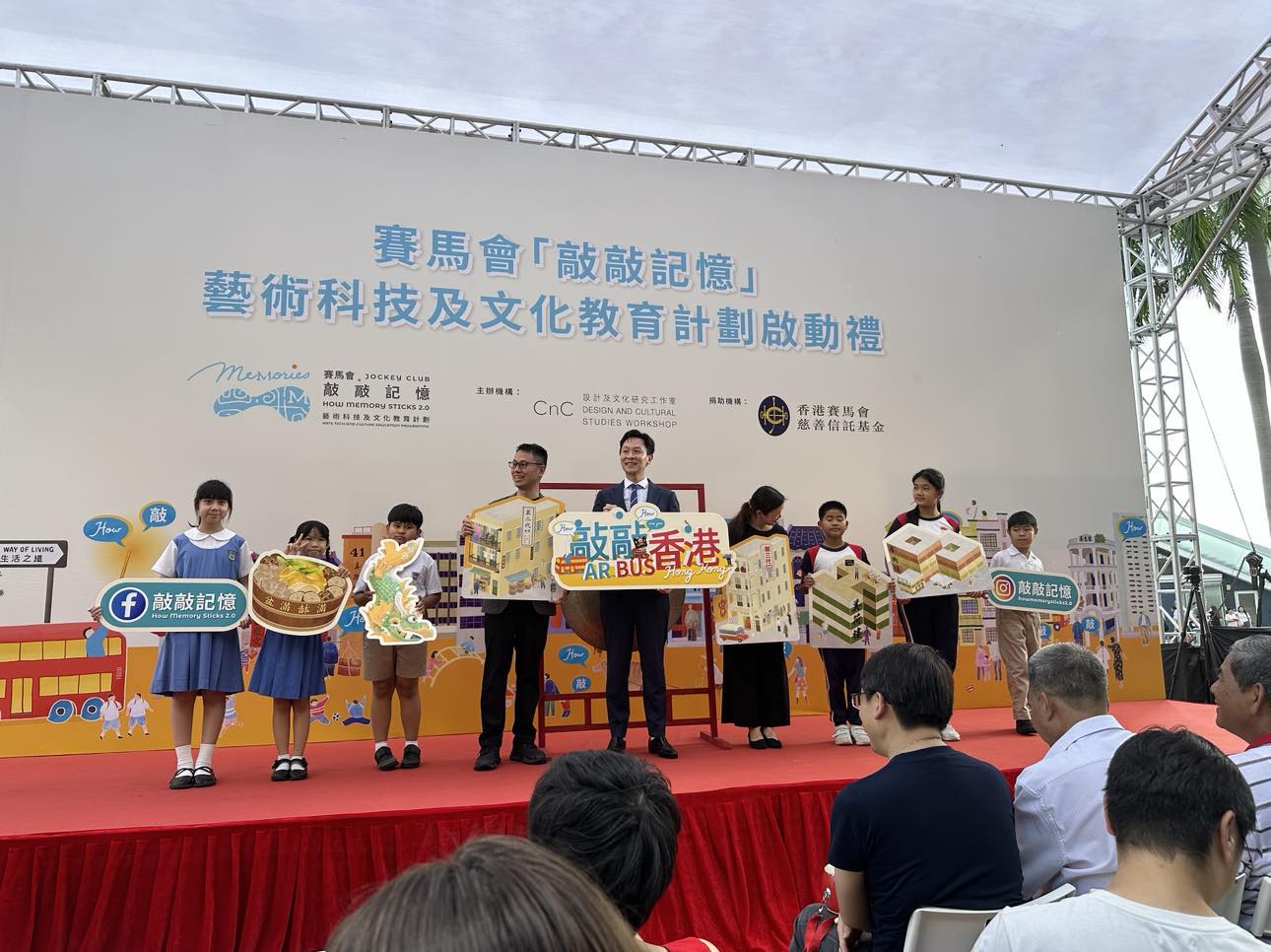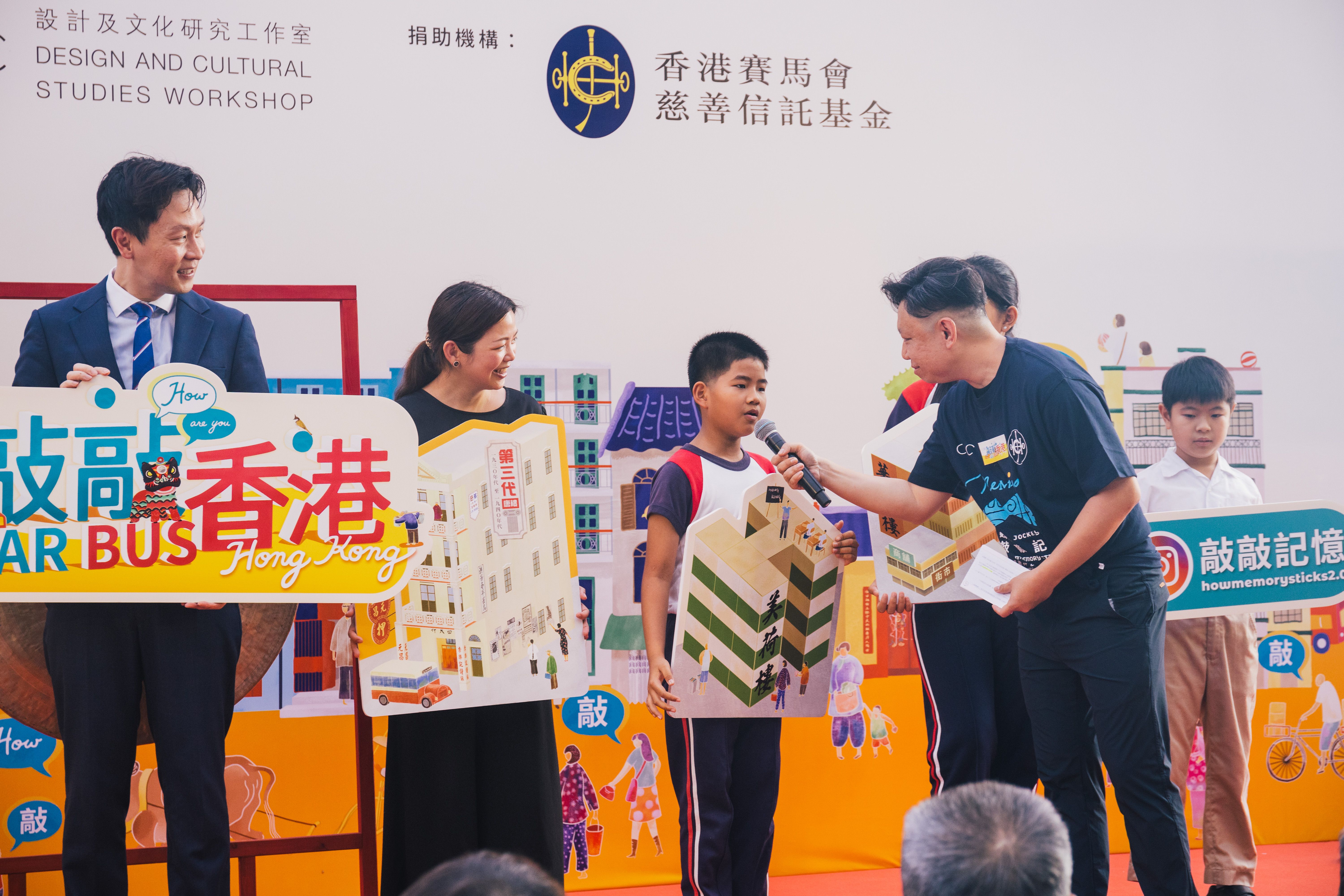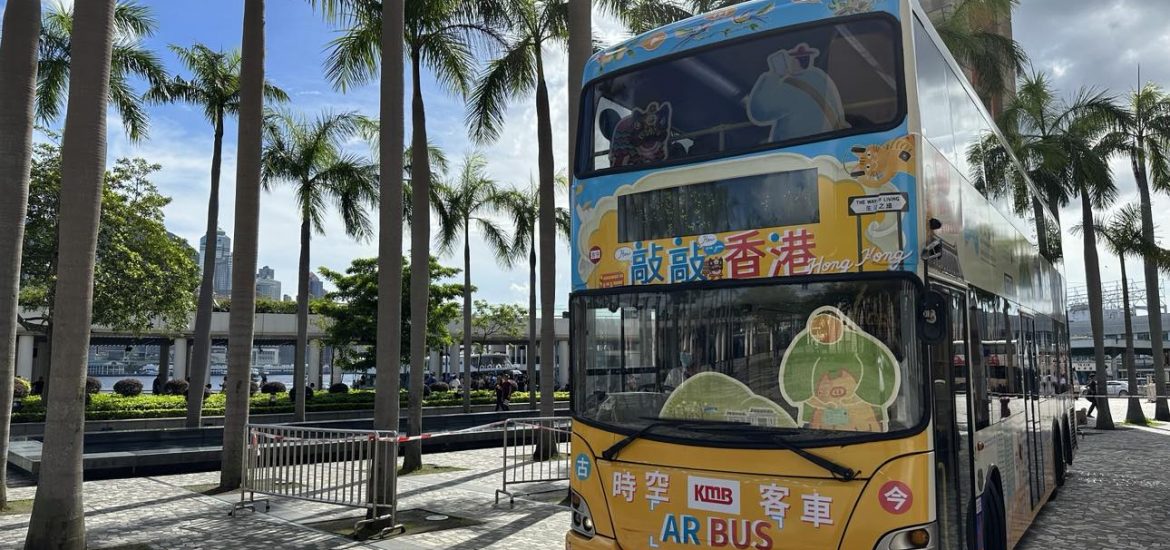This bus by the famous clocktower is not like the others: the scanning of a QR code or AR (augmented reality) marker on one of the seats or in the vehicle interior unlocks, on smartphone or tablet, a unique world of tales and memories of rural and urban Hong Kong. More than 10 bus routes courtesy of KMB have been chosen to facilitate “How Memory Sticks 2.0・ AR Bus.” This program will allow commuters to interact with the routes of these buses, as DJs from Commercial Radio Hong Kong provide narration and performances about the landmarks and curiosities of Hong Kong heritage, from landmarks to customs to art and food.
The launch ceremony on 26 June was an inspiring affair, with students from a local school joining in a tour of an “AR bus” parked near the iconic Cultural Centre in Tsim Sha Tsui. The ceremony was officiated by Dr. Lesley Chan Ka Hei, the Education Bureau’s Chief Curriculum Development Officer (Arts Education), Ms. Carmen Ho, Senior Manager, Charities of The Hong Kong Jockey Club, and Mr. Ma Kin Chung, Education Director of designer-artist Chiu Kwong-chiu’s Design and Cultural Studies Workshop (CnC) .

Two free example routes are Sam Tung Uk Museum in Tsuen Wan to 618 Shanghai Street to Mei Ho House and Chau Wong Yi Kung Study Hall to Tang Ching Lok Ancestral Hall to Long Ching Estate. There is AR animation that enables an interactive exploration of the geography of traditional villages, the Tang-style buildings of older times, and public housing that has come to form Hongkonger identity. Use of VR (virtual reality) also allows users to take selfies of themselves in rural or urban fashion and share their personalized pictures on social media. The tour explores how people have balanced architectural needs with nature, while pursuing a path of development between Old Hong Kong and the rapidly changing city of today.

This is a project under a broader initiative called How Memory Sticks 2.0: Arts Tech and Culture Education Programme. It is supported by the Hong Kong Jockey Club Charities (HKJC) Trust, with CnC as the organizer. The Workshop is famous for pioneering new concepts in the field of heritage education, especially for families and students. Among these initiatives is a brand called We All Live in the Forbidden City, which was one of the first to explore educational AR for the residence and political center of the Qing Dynasty (1644–1911). One of the earliest exhibits was held in Hong Kong back in October 2010. I remember it for being one of the first events I covered as a freelance, greenhorn contributor reporting for Buddhistdoor Global (another exhibit was held in Beijing in collaboration with the Palace Museum in 2017).
Ma said that the Cantonese name for “How Memory Sticks” is a pun on the “how” (敲) character as a “knock knock” sound (敲敲). “This encourages us to take action to discover the hidden histories in our community, or even throughout Hong Kong. ‘How’ also implies ‘How are you?,’ which is a greeting to our hometown Hong Kong.” He further noted, “Through accessible and engaging methods such as animations, short films, recordings, technology and mass transportation, we hope to invite audience to appreciate traditional Chinese culture and Hong Kong local history in a diverse, modern and approachable way.”
See more
賽馬會「敲敲記憶」藝術科技及文化教育計劃啟動禮 (Chinese only) (CnC)


